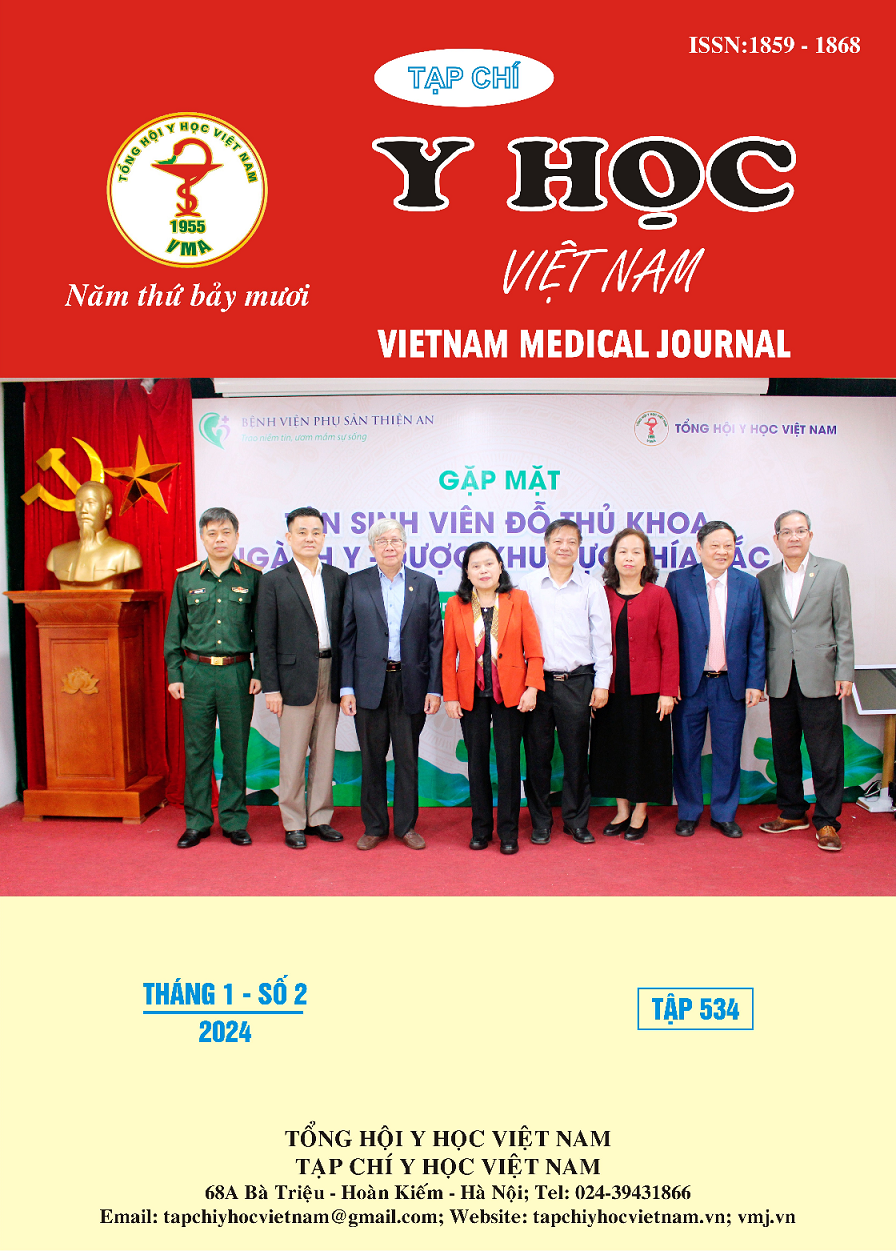CLINICAL AND ULTRASOUND CHARACTERISTICS OF LOCAL DAMAGES ON PATIENTS WITH COBRA BITES
Main Article Content
Abstract
Objective: to describe the clinical and ultrasound characteristics of local effects on patients envenomed by cobra snakes. Methods: the observational prospective study included 104 patients bitten by cobra snakes treated at the Poison Control Center of Bach Mai Hospital from July 2022 to October 2023. Results: mean age was 50,9±14,1 years old, mostly male patients. The common bites were at the digits. Local signs were pain (100%), swelling (100%), fang marks (71,2%), blisters (50%), skin necrosis (90,4%) and mild compartment syndrome (12,5%). POCUS revealed fluid-filled collection (36.5%), tendon sheath edema (83,7%), subcutaneous edema (100%) 2,5 times more than the normal limb, muscle edema (35,5%) 1,07 times more than the normal limb, extraneous body (1%). Limb edema was mainly SCE edema, and the contribution of muscle edema is minimal. There was a positive correlation between SCE and clinical distant spread (p < 0,001 and r = 0,973). SCE often appeared ealier than skin manifestations. The difference between the two measurements suggested the local damage progressing. Conclusion: POCUS provided more information of the local effects caused by cobra bites.
Article Details
References
2. Vũ Văn Đính, Nguyễn Quốc Anh. Hồi sức cấp cứu toàn tập. Tái bản lần thứ 7. Nhà Xuất bản Y học - Bộ Y tế; 2019.
3. Wood D, Sartorius B, Hift R. Ultrasound findings in 42 patients with cytotoxic tissue damage following bites by South African snakes. Emerg Med J. 2016;33(7):477-481. doi:10.1136/ emermed-2015-205279
4. Lê Xuân Quý. Đặc điểm lâm sàng, vi khuẩn học của tổn thương tại chỗ và mô mềm do rắn hổ mang cắn. Đại học Y Hà Nội; 2018.
5. Faiz MA, Ahsan MF, Ghose A, et al. Bites by the Monocled Cobra, Naja kaouthia, in Chittagong Division, Bangladesh: Epidemiology, Clinical Features of Envenoming and Management of 70 Identified Cases. Am J Trop Med Hyg. 2017;96(4):876-884. doi:10.4269/ajtmh.16-0842
6. Phạm Thị Việt Dung. Đặc điểm lâm sàng tổn thương tại chỗ do rắn hổ mang cắn. Tạp chí Y học Việt Nam. Published online 2022:12.
7. Wang W, Chen QF, Yin RX, et al. Clinical features and treatment experience: a review of 292 Chinese cobra snakebites. Environ Toxicol Pharmacol. 2014;37(2): 648-655. doi: 10.1016/ j.etap.2013.12.018
8. Nguyễn Đức Phúc NVT. Đặc điểm lâm sàng, cận lâm sàng ở bệnh nhân bị rắn hổ mang cắn tại bệnh viện Hữu Nghị Đa khoa Nghệ An. Tạp chí Y học Việt Nam.:166-169.
9. Liu CC, Chou YS, Chen CY, et al. Pathogenesis of local necrosis induced by Naja atra venom: Assessment of the neutralization ability of Taiwanese freeze-dried neurotoxic antivenom in animal models. PLoS Negl Trop Dis. 2020;14(2): e0008054. doi:10.1371/journal.pntd.0008054
10. Kularatne S a. M, Budagoda BDSS, Gawarammana IB, Kularatne WKS. Epidemiology, clinical profile and management issues of cobra (Naja naja) bites in Sri Lanka: first authenticated case series. Trans R Soc Trop Med Hyg. 2009; 103(9): 924-930. doi: 10.1016/ j.trstmh. 2009. 04.002


